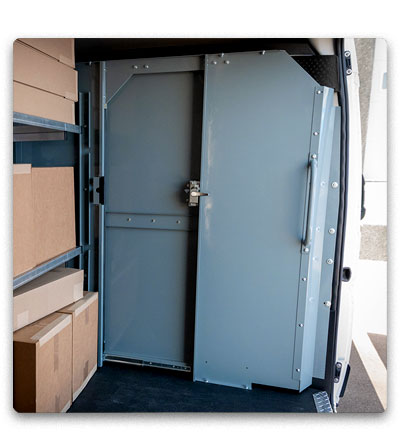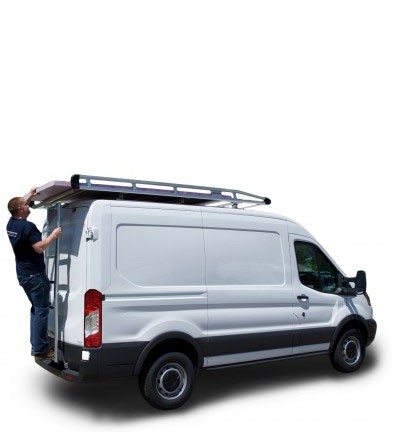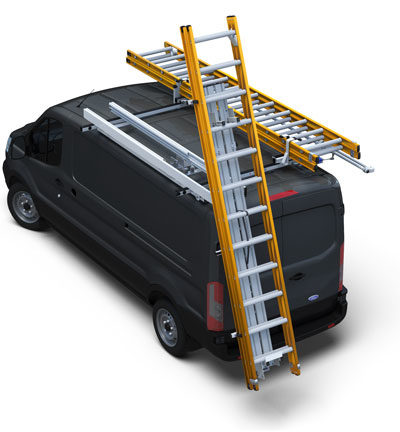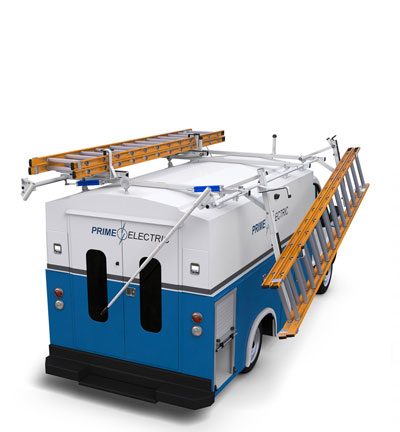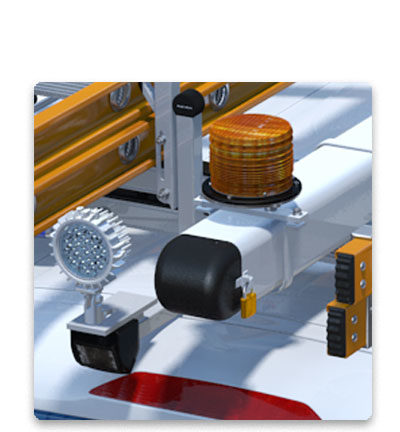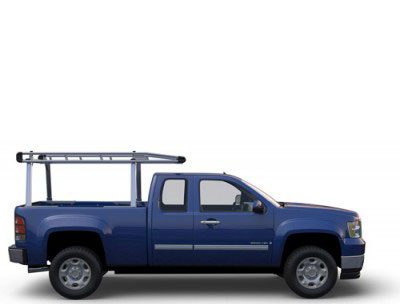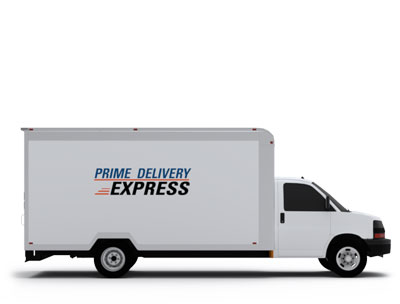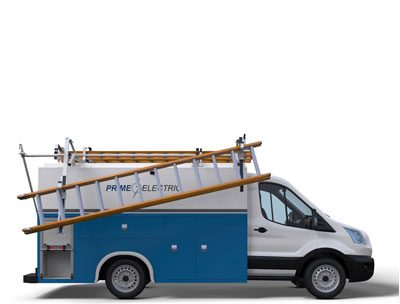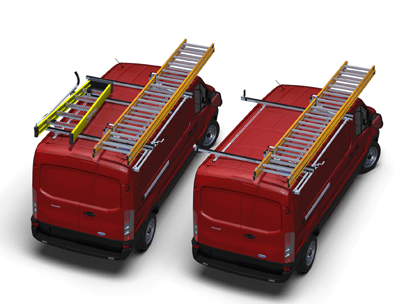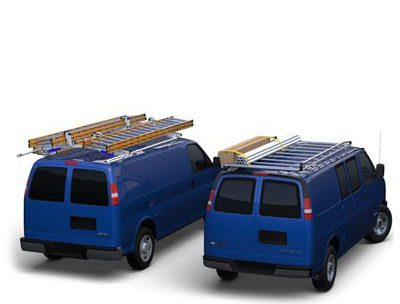
Spec’ing a truck or van upfit is the very beginning of a time-intensive, detail-oriented process – and the last place you want to make a mistake. As a relative newcomer to the industry, I’m always looking to expand my knowledge and gain a deeper understanding of best practices. To that end, I reached out to the VP of Commercial Vehicle, Craig Bonham, to learn more about the spec’ing process.
What follows is a transcript of our conversation as we explored common errors that fleet managers make, tips on how they can improve their process for future projects, and some industry trends related to spec’ing outfits. I think it’s important to emphasize that this conversation was a learning exercise – talking about mistakes is a great way to identify solutions and develop better systems! In the words of Oscar Wilde…
Experience is simply the name we give our mistakes.
With that in mind, let’s see what Craig has to say about spec’ing truck and van upfits!
Gabe: Thanks for taking some time out of your schedule to chat with me today, Craig! Let’s get right to it – when it comes to spec’ing truck or van upfits, what are some mistakes you’ve seen fleet managers make?
Craig: Of course! A big one is not properly job-rating the vehicle for the application it’s to be used in – or the environment that’s it’s placed in. Decisions made at the chassis or van level often don’t account for all the ancillary equipment that’s put on that vehicle. If it is not properly job-rated, that could inadvertently affect the performance, lifespan, or the safety of the vehicle.
Gabe: How would one go about job-rating a vehicle properly?
Craig: It’s very important that the fleet manager works closely not just with the chassis manufacturer but also with the equipment manufacturer. Taking the time to evaluate the overall performance of the vehicle with the adaptive equipment installed on it will help to validate the investment.
Gabe: Makes sense! What’s another mistake you’ve seen?
Craig: When fleet managers make the price of equipment their primary consideration. We all know that fleets have budgetary guidelines. Sometimes those guidelines dictate the choice of the upfitter or the product that will be procured for that particular application. While prices are certainly a key component, fleets should expect to get a realized return on investment and to have an understanding of what the total cost of ownership is for that vehicle.
Gabe: Interesting – what’s your recommendation for getting that desired return on investment?
Craig: Less expensive products may not be of the same quality as a higher-priced product. At times the less expensive products have a shorter life cycle leading to higher replacement and service costs after the sale. If the product is failing because the equipment isn’t holding up, that leads to a replacement, which drives an escalated, un-forecasted cost on the vehicle. Vehicle downtime as a result of repairs means the vehicle is out of service and not generating revenue, so it’s costing the fleet money. And finally, they’re not achieving the reputation that they would expect while the vehicle is on the road – it could damage the fleet’s brand image. All of these factors should be taken into consideration during the spec’ing process.
Gabe: There’s a lot to consider there – what’s one last pitfall for fleet managers during the spec’ing process?
Craig: I’d say getting started on a project too late to properly spec out a vehicle for the equipment desired. Many times, the vehicle is on order, but the decision hasn’t been made on who to buy the equipment from – and that can be problematic. At times this leads to equipment specification changes that could potentially jeopardize the owner/operator’s expectations.
Gabe: How would a fleet manager go about getting out ahead of this issue?
Craig: It’s critical that the chosen upfitter, or those that have been awarded the bid be brought into the fold earlier – before the vehicle is ordered. This way they have time to react and procure the necessary components to complete the job on-time, as promised. This is critical when there are components to be sourced for the upfit since many have longer lead times than standard SKUs. This is becoming more of an issue today since companies rely heavily on just-in-time delivery of componentry. This helps keep an operation running lean with less WIP.
Gabe: What’s a trend you’re seeing related to truck and van upfits over the past year?
Craig: With regards to order-to-delivery, a lot of companies – while they do plan for purchases – they tend to procrastinate on making those purchases. So, because of a compressed timeline, everything ends up being based on availability – they’re looking for speed to market in the delivery process. This leads to the pressure being on the upfitter now, and they’re becoming more incentivized to be fast. So, for all of those reasons, there’s a significant amount of pressure that goes onto the suppliers because everyone is now on an adjusted-time delivery market. The manufacturer doesn’t want to bring excess inventory in, the assembly or the upfitter doesn’t have room, or the working capital to tie up in products sitting around waiting on a vehicle – so that’s changed everything to a model that is very speed-to-market driven.
Gabe: Understood! Let’s shift gears a little bit – going beyond the fixes you mentioned earlier, do you have any tips for fleet managers spec’ing new truck or van upfits to improve their process?
Craig: I’ve got a few! First, it’s always best – especially when there are high volume levels of equipment being purchased – that the manufacturer of the equipment is involved with the specification process, along with the OEM chassis manufacturer. Work with both to understand the performance of the vehicle, the gradeability of the vehicle, the towing capacity of the vehicle, the expected sustainable speed that they should keep in mind when the adaptive equipment is installed, what the expectation of maintenance schedules are.
Gabe: Getting input from the manufacturer side of things makes a lot of sense, but I’m sure it’s something that gets lost in the shuffle fairly regularly. Are there any other perspectives that might be helpful?
Craig: Absolutely. Many large fleets have an internal maintenance department, so it’s always good to get their input early on. They should also have an understanding of what’s expected (maintenance schedules, etc.) after the product is procured. Sometimes because of past experiences with maintaining a product, they’ll have a recommendation for a better route to equip the next vehicle or the next series of units. Many times, the maintenance teams of a fleet provide great insight to changes needed for a more productive fleet.
Gabe: Great point! Any final thoughts before we wrap this up?
Craig: Yes – safety is probably one of the biggest concerns that comes into play now. Does the vehicle operate ergonomically? Does it help to isolate the operator from potential injury? Companies today expect to get their work done faster than ever before because efficiency is a revenue-generator for them, and sometimes the ‘hurry-up’ processes lead to potential injury. Because of that ‘hurry-up mentality’, it’s important to evaluate how a product will function in high-energy, demanding environments – from standpoints of both functionality and safety.



